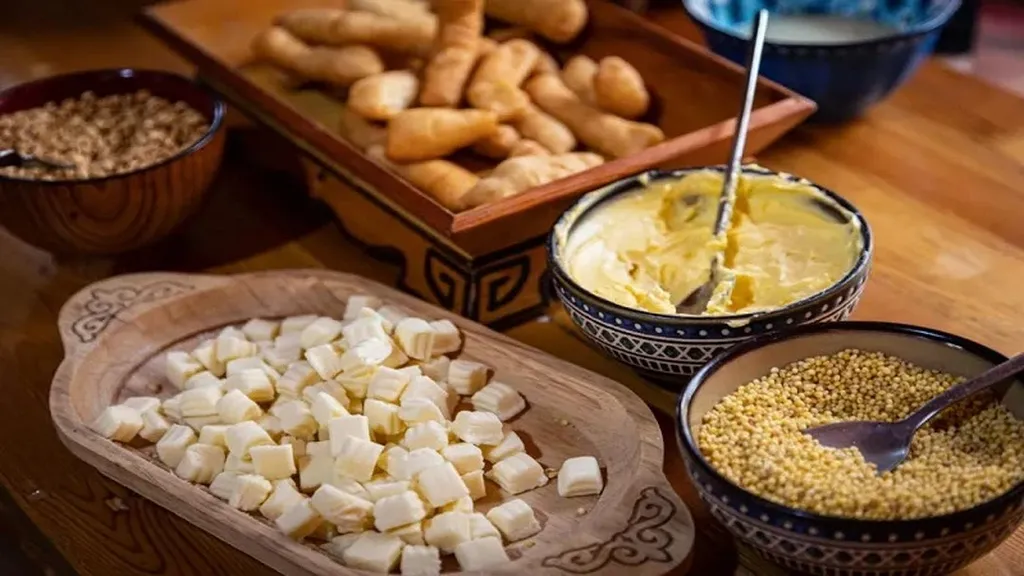In the heart of Inner Mongolia, a team of researchers led by XUE Juanjuan from Xinjiang University has uncovered a fascinating world of microbial diversity hidden within traditional fermented sour porridges. Their study, published in the journal *Shipin Kexue* (which translates to *Food Science*), sheds light on how different raw materials can significantly influence the microbial community structure and functionality in these fermented foods, potentially opening new avenues for the food and beverage industry.
The research team collected three types of fermented sour porridges from Qingshuihe County and isolated eight strains of lactic acid bacteria (LAB) and yeasts. Using high-throughput sequencing, they identified the predominant bacterial genera as Lactobacillus, Acetobacter, and Lentilactobacillus, while the dominant fungal genera were Issatchenkia, Alternaria, and Pichia. This detailed microbial mapping is crucial for understanding the fermentation process and could lead to more controlled and efficient production methods.
“Different cereal combinations specifically promote bacterial or fungal aggregation,” explained XUE Juanjuan, the lead author of the study. This finding suggests that the choice of raw materials can be strategically used to cultivate specific microbial communities, enhancing the flavor, texture, and nutritional profile of fermented products.
The physiological characterization of the isolated strains revealed some promising properties. For instance, all LAB strains reduced the pH to around 3.66–3.70 after 48 hours of incubation, indicating their potential for preserving food by creating an acidic environment that inhibits harmful bacteria. Strain SMF 5 exhibited outstanding gas production performance, which could be beneficial for products like sourdough bread. Meanwhile, strains SXZ 6 and SZ 1+ showed good acid tolerance, and SZ 4 and SMF 5 demonstrated good bile salt tolerance, suggesting their potential for use in probiotic products.
Moreover, strains SXZ 7 and SXZ 9 showed remarkable antioxidant properties, scavenging over 90% of 1,1-diphenyl-2-picrylhydrazyl radical. This could open up new possibilities for developing functional foods with enhanced health benefits.
The implications of this research extend beyond traditional fermentation. As the food industry increasingly seeks to incorporate functional and probiotic ingredients, understanding the microbial diversity and physiological characteristics of these strains can drive innovation. For example, the identification of strains with specific functionalities could lead to the development of tailored starter cultures for various fermented products, improving consistency and quality.
Furthermore, the study highlights the importance of preserving traditional fermentation practices, which often harbor a rich diversity of microbes that could hold the key to future food innovations. As WANG Qi, one of the co-authors, noted, “Traditional fermentation practices are a goldmine of microbial diversity. By studying and understanding these practices, we can unlock new possibilities for the food industry.”
In conclusion, this research not only deepens our understanding of the microbial diversity in fermented sour porridges but also paves the way for future developments in the food and beverage industry. As the global demand for functional and probiotic foods continues to grow, the insights gained from this study could prove invaluable for commercial applications. The team’s work, published in *Shipin Kexue*, serves as a testament to the potential of traditional practices in driving modern innovations.

